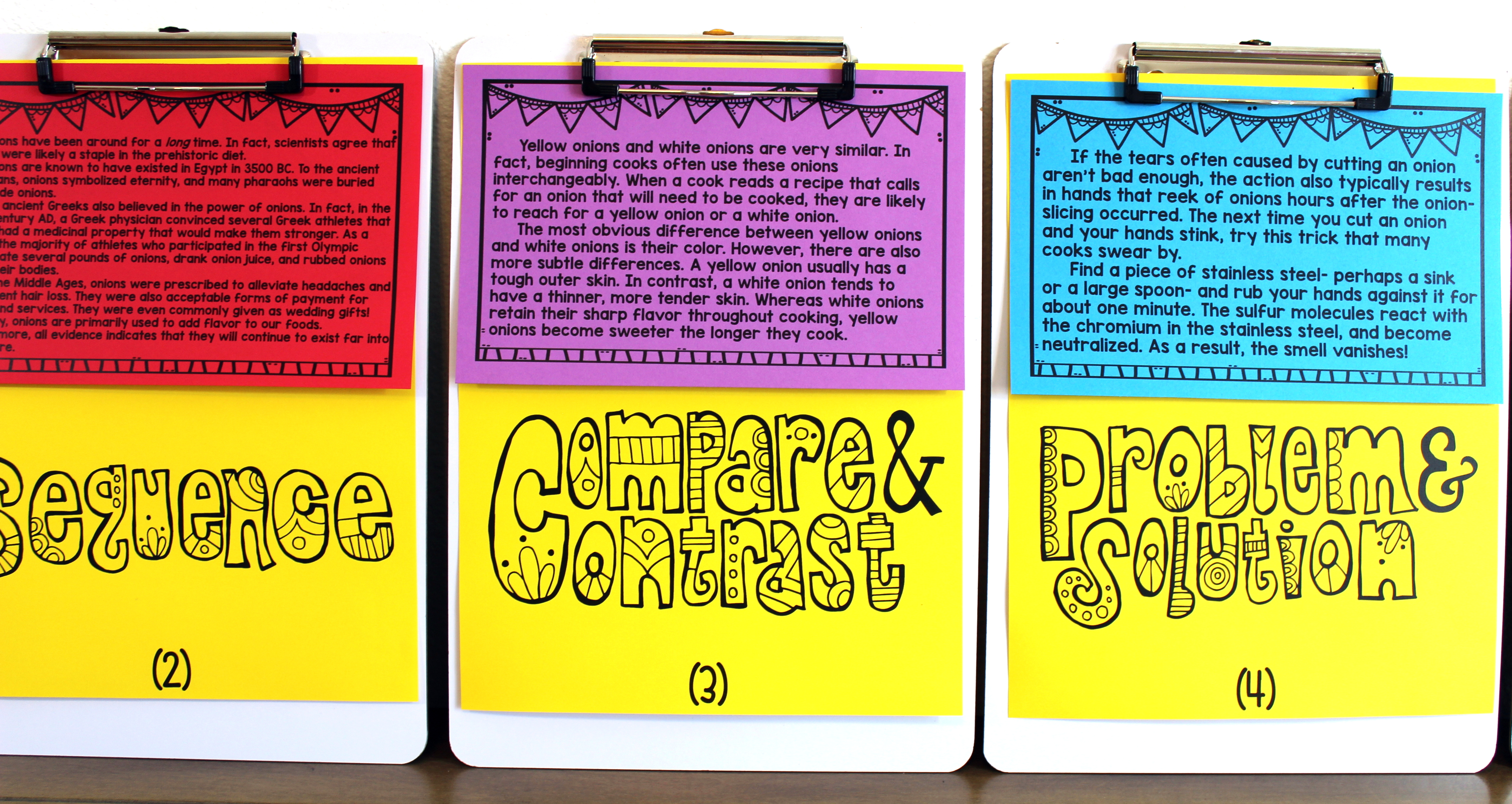Informational text structures... this was the ELA topic that scared me the most when I was coteaching in upper elementary classrooms. Over the years, though, I've become more comfortable with the topic, and today I want to share a complete text structures lesson with you. To be completely honest, I've received such positive, thoughtful feedback about my free character traits lesson, that I decided to create a similar text structure lesson for my followers, too! If you read through this post, and decide that you want to try this activity with your students, be sure to click on the following image. Everything you need for this lesson is FREE! (Well, almost everything… you’ll have to provide your own anchor chart paper and clipboards!)
I would plan to do this lesson about halfway through my text structure unit. (I would show students my PowerPoint and work through my flipbook before this lesson would take place. By doing these activities first, students should have all of the prior knowledge necessary to fully participate in this review lesson.) I would prepare for this lesson by drawing the base of my text structure anchor chart (the rows and columns would be drawn, and the left column would be labeled). I would also have the passages printed, the interactive notebook copies printed, and the clipboards ready to go.
To begin the lesson, I would share the unfinished anchor chart with students and follow these steps:

Pin for later:
To begin the lesson, I would share the unfinished anchor chart with students and follow these steps:
- Hold up one of the images, and ask students to tell me which row it belonged in.
- Glue the first image in place.
- Ask students to help me think of a guiding question for that text structure that I could write in the middle column.
- Instruct students to turn to a partner and list some of the signal words we have learned for that text structure.
- Tell students that I'm going to jot down a few of the words I heard mentioned during the partner conversations that just took place, and do so beside the image (as shown).
- Repeat the previous five steps with the other four text structures.
The next component of this lesson includes these five clipboards. As you can see, each clipboard is labeled with the name of a text structure and its matching graphic. I also assigned a number to each clipboard.
I would tell students to listen carefully as I read aloud a passage. (I would also use a document camera to display the passages so my students could follow along.) After reading the nonfiction passage, students need to identify the text structure used by the author. To make sure everyone remains engaged, I would instruct students to display each answer by holding up fingers… one finger for description, two fingers for sequence, three fingers for compare and contrast, etc. After asking a few students to justify their answer (hopefully by using some of the language from our anchor chart), I would invite a student to clip the passage onto the correct clipboard.
Finally, I would have my students add the following clipboard images to their reading notebooks. Students can refer to the anchor chart as they write the guided question under each clipboard.
(Notice that only the top of each clipboard is glued in place, allowing it to be flipped up and written beneath.)
If you are looking for additional resources for teaching text structures to your upper elementary students, feel free to check out the following resources.
Thank you for stopping by today!
Pin for later:






















